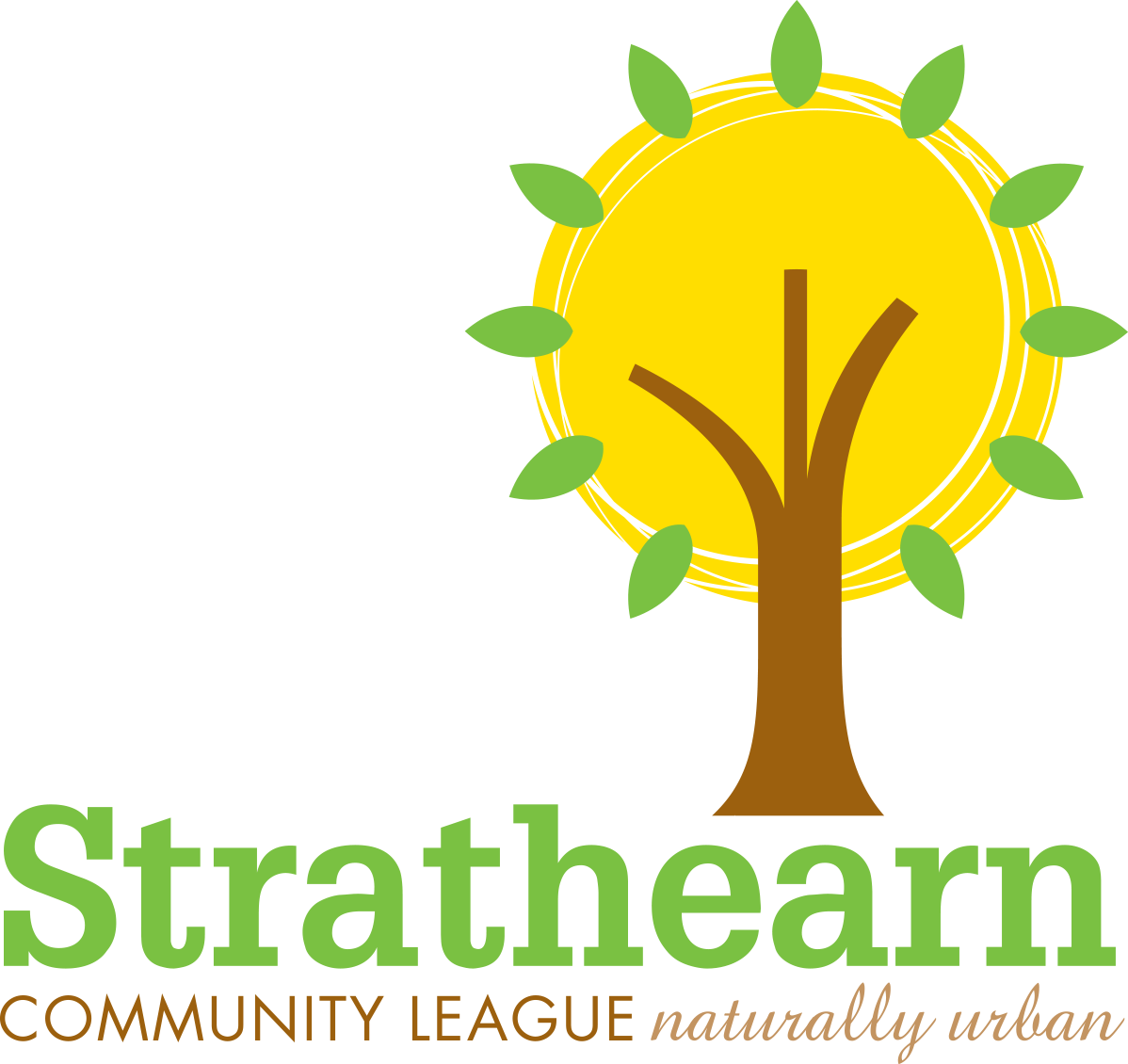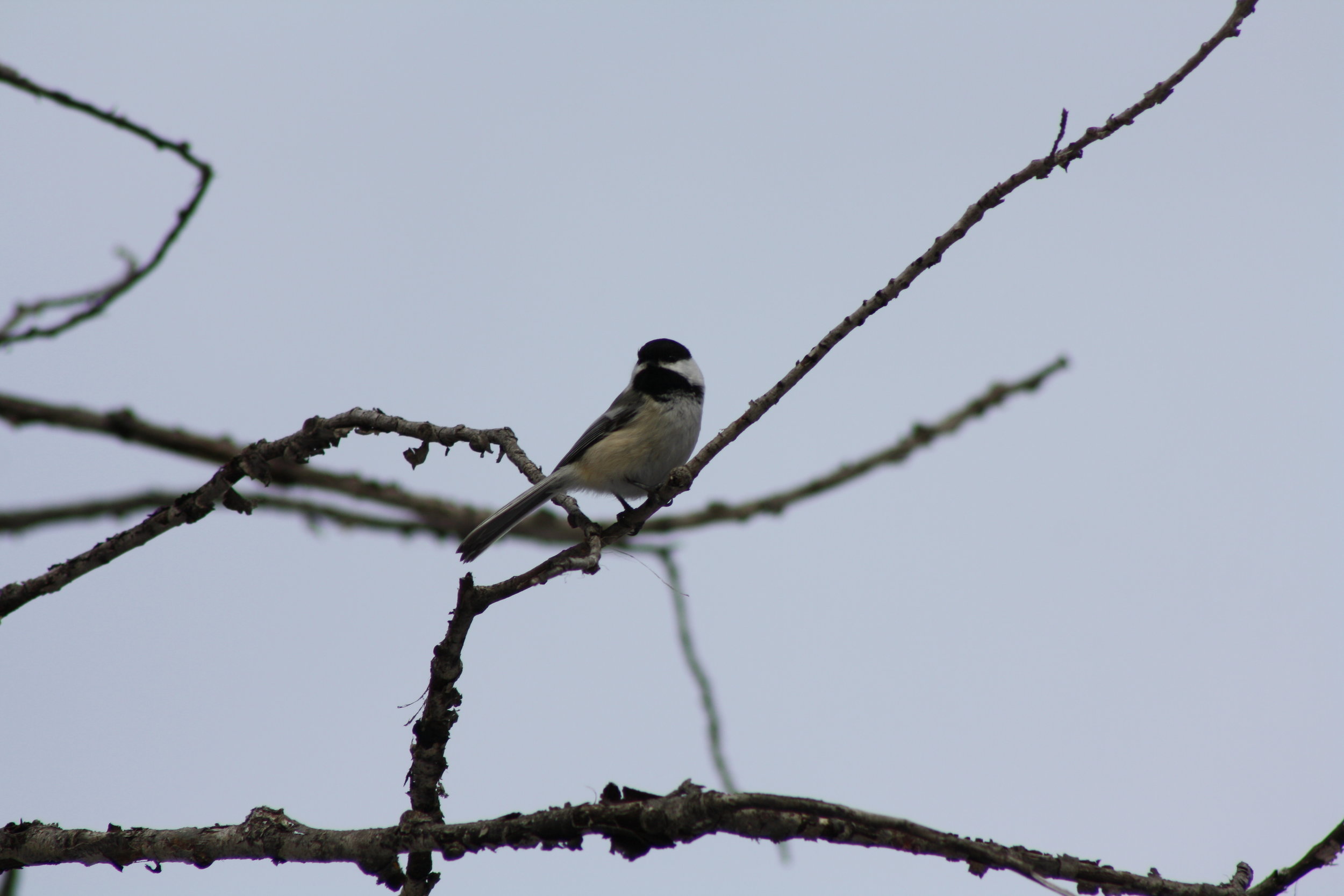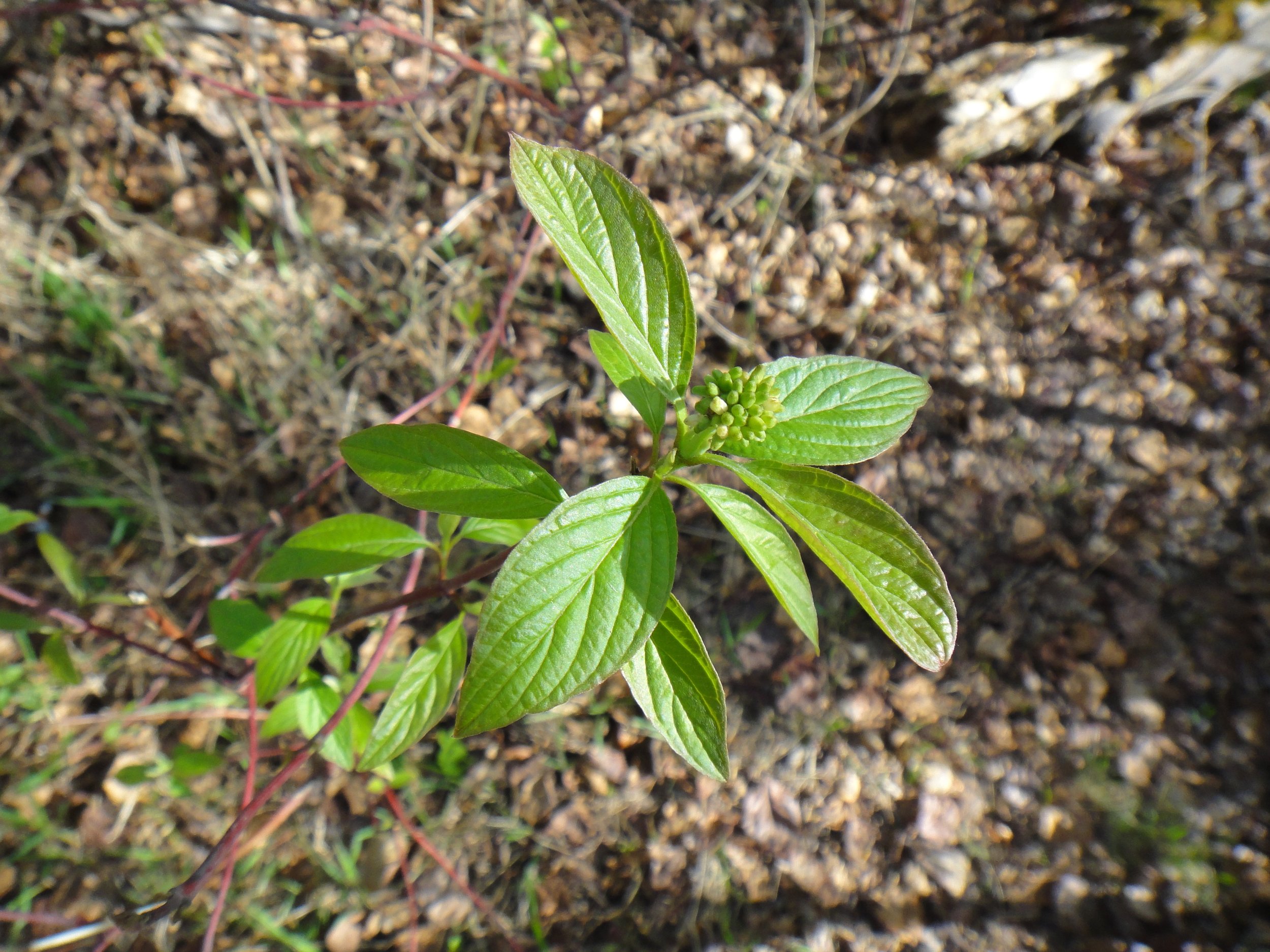- Brickyard - Past - Courtesy of the Provincial Archives of Alberta, B1352
- Black-Capped Chickadee Courtesy of Corey Scobie
- Camel Humps Park - Now - Courtesy of Diana Tirlea
- Dog-Wood – Courtesy of Diana Tirlea
Strathearn is a dynamic neighbourhood to live in. There are many changes happening right now, including the opening of our new community hall, future community garden, and coming LRT line. But what about the changes our neighbourhood has experienced in the past? In this article, we will dive into some of the history and nature of Camel Humps, the treed nature preserve bordering the north perimeter of Strathearn Park along Strathearn Drive.
Just over a hundred years ago, the site was used for brick making—first by a company called Pressed Brick Ltd. (1907-1911), and then by the Hardstone Brick Company (1912-1915). The owners of Hardstone Brick noticed that the location was perfect for making sand-lime bricks, which were stronger than regular clay bricks. They drew sand from pits directly on their site, and fired the bricks in kilns, powered by coal mined near the riverbanks.
Hardstone Brick was, at the time, a very modern operation. They installed new equipment on the site, and claimed to be the first company in Canada to use a German brick-making process called the “Magdeburg” process. Unlike some of their competitors, including the Anderson brick company just east of Mill Creek, Hardstone even had electricity, automatic machines, and could operate year round—not simply in the summer months.
They advertised production rates of 30,000 bricks in a ten-hour day, and offered several varieties in a range of colours. By December of 1915, however, the company had stopped production and was liquidating its assets. Hardstone Bricks was only in business for three years.
For many decades after, you could still see traces of where the sand was mined in and around Camel Humps, and carted over to the brickworks. Perhaps you can still see them today? In 1986, Camel Humps was designated a nature preserve, based on its use by groups for nature interpretation programming and as an environmentally sensitive area.
Today, Camel Humps is a preserve with a mature stand of trees, mostly deciduous Trembling Aspen and Balsam Poplar trees. In early spring, you can see fuzzy clusters of flowers on these trees before the leaf buds pop open; these are the showy catkins produced in spring by willow-related plants, including poplar trees and pussy willows.
To identify these common trees, you can feel the leaf stalks, called “petioles,” between your fingers. If the petiole is flattened and the leaves are round and somewhat heart-shaped, you have Trembling Aspen. Balsam Poplar leaves are more robust, shiny, oval-shaped, and have more rounded petioles.
If you descend the stairs into the preserve, you will see an understory made up of mostly red-stemmed Red-Osier Dogwood, Willows, Prickly Rose, creeping Sweet-Clover and Field Horsetail. The wood of Red-Osier Dogwood is a valuable food source for many deer species, and small mammals like the common city-dweller, the White-Tailed Prairie Hare (aka Jack Rabbit).
Hares are often larger, have longer hind legs and ears than rabbits do, and the baby hares (leverets) are born with their eyes open, furred, are mobile, and live aboveground—compared to the helpless kittens of rabbits. You will often see leverets alone, which is normal, as the female hare is rarely near them.
Camel Humps is also home to numerous birds. Many birds have calls and songs, which sound different, and are a way to communicate with one another. This includes the friendly Black-Capped Chickadee, with their signature “chickadee-dee-dee” call. To warn other chickadees in the area of a threat, like an approaching predator, they end this call with more “dees” or they make a high-pitched “see” or “see-see-seet” call. Their song sounds like “feeeee-bee” or “cheeesssse-burger.”
In spring, they are busy building their nests in small cavities of trees and laying 5-10 eggs. In a period of about a month, the chicks will have hatched, grown flight feathers, and fledged (leaving the nest). Chickadees’ primary food source is insects, so they help to reduce and maintain insect populations, including the loathed mosquito.
Next time you’re hiking through Camel Humps, watch for the traces of the old brickworks, or of the many species of plants and animals that are our neighbours!
By Diana Tirlea & Jillian Richardson
Resources to Explore
https://www.allaboutbirds.org/
http://edmontonnativeplantgroup.org/
https://www.edmonton.ca/city_government/edmonton_archives/ross-acreage.aspx





